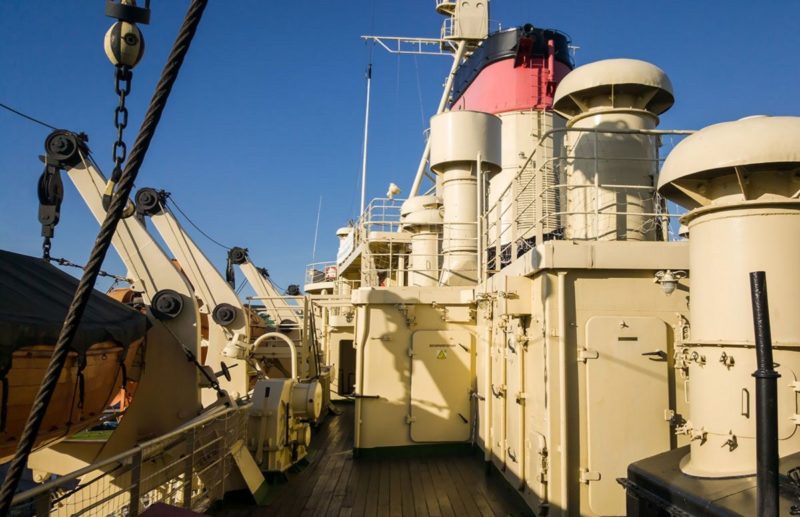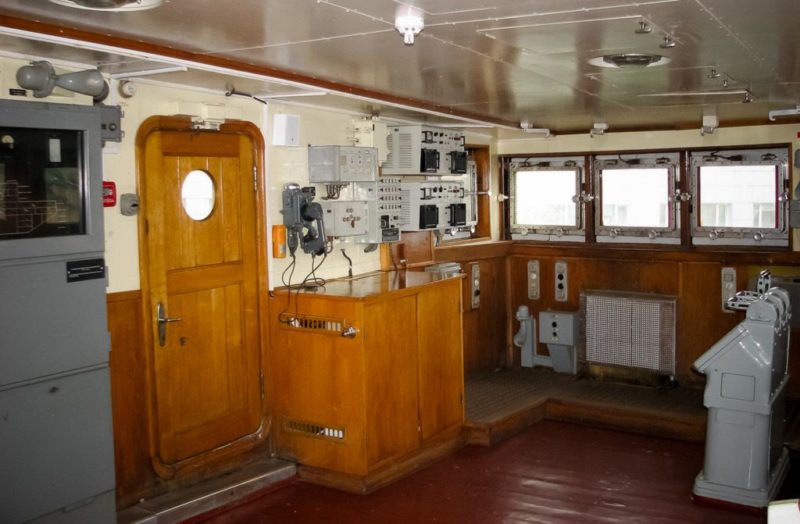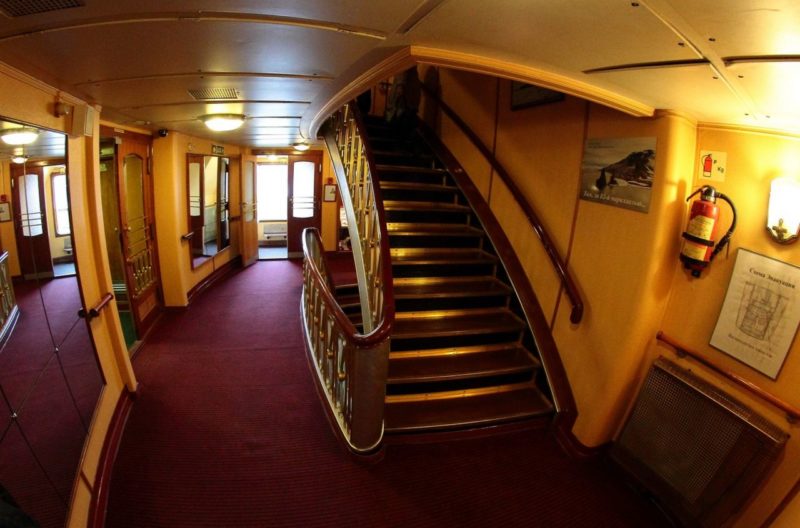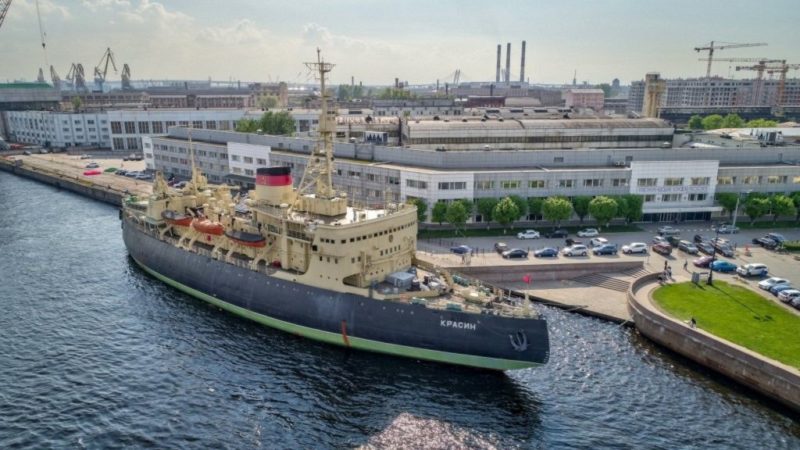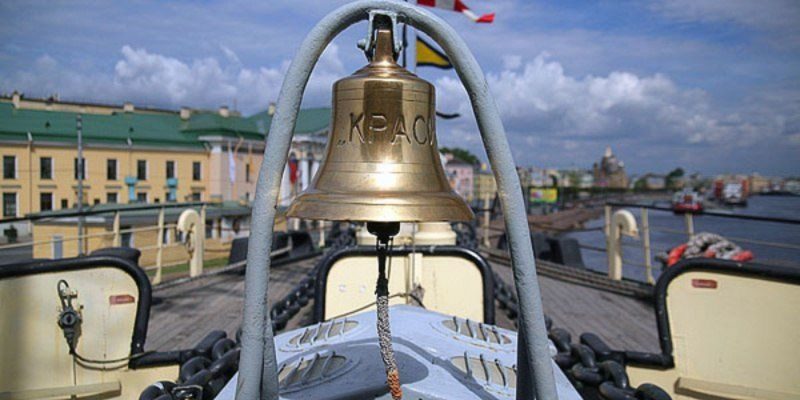The icebreaker "Krasin" in St Petersburg
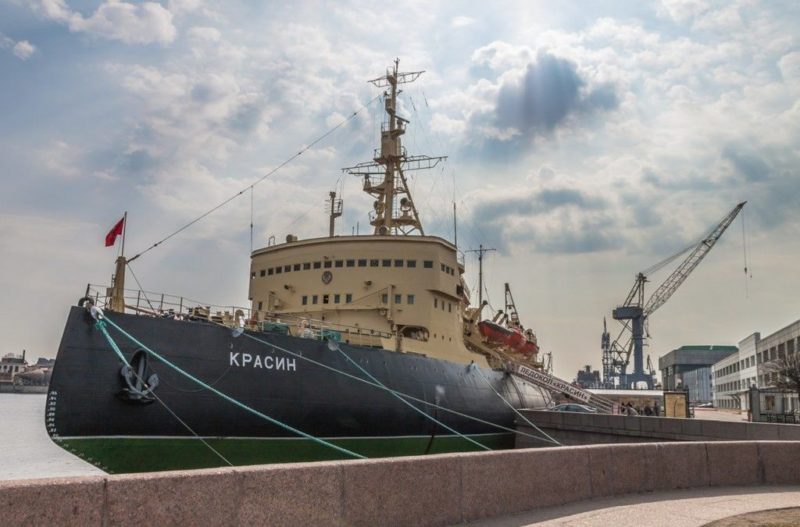
Address:
St. Petersburg, Leitenanta Shmidta embankment, 23 line V.O.
Working time:
Monday - Tuesday: Free
Wednesday - Sunday: 11:00 - 18:00
Not opened on last Wednesday of the month
Description
By the beginning of the 20th century, Russia had already occupied a leading position in the study of the expanse of the Arctic Ocean. For this, for the first time linear icebreakers “Yermak” and “Svyatogor” were used, the design of which was so perfect that it allowed them to remain the most powerful ships of this class in the world during the first half of the twentieth century. "Svyatogor" ("Krasin") was built at the beginning of the 20th century in the city of Newcastle (England) by order of the Russian government. Russian engineers also took part in its construction.
On January 3, 1917, the first icebreaker was launched into the sea, and on March 31 of that same year, the St. Andrew’s flag was raised on the Svyatoslav — the ship was enlisted in the flotilla of the Arctic Ocean. This event determined the history of Russian icebreaking for many years to come. In the autumn of the same year, Svyatogor was sent to Arhangelsk, where it was soon flooded on the Northern Dvina due to the threat of the city being captured by the British. They successfully raised the icebreaker and sent it under a British flag to a base in Norway.
"Svyatogor" was bought by the Soviet government in 1921 on the initiative of the Soviet plenipotentiary Leonid Krasin. In 1927, an icebreaker was named after him.
In the summer of 1928, the “Krasin” had to take part in the legendary rescue of the crew of the airship “Italia” by polar explorer U. Nobile. He planned to reach the North Pole by airship, this enterprise ended with the fall of "Italy" among the Arctic ice. Expeditions of several countries took part in the rescue operation. Our icebreaker Krasin was the first to hit the wreck. Having taken the U. Nobile expedition aboard, on the way back, the Krasin came to the aid of the German steamer “Monte-Cervantes” with more than 1,800 passengers on board, which crashed after colliding with an iceberg.
In the 1930s, the icebreaker provided shipping on the White and Baltic Seas, and was also a research vessel. In 1934, he participated in the rescue of the Chelyuskinites, and during the war years - in the wiring of polar convoys, the icebreaker was also used to deliver cargo. So, in 1942, Krasin was part of the PQ-15 (polar convoy).
For thirty-five years, the Krasin was the world's most powerful icebreaker. From 1952 to 1959 He was modernized in the GDR at the shipyard of Wismar, until the 1970s he worked in the Arctic as a floating power station and a research vessel. In 1992, the ship was handed over to the International Fund of St. Petersburg, in the status of state significance of a historical monument. By 1996, the ship was repaired, after which the Krasin moored on the Lieutenant Schmidt Embankment, the first exposition was opened here. In 2004, the Krasin icebreaker was handed over to the Museum of the World Ocean, and a branch of this museum in St. Petersburg was organized on board. And the icebreaker with the legendary name "Krasin" continues to prick the ice of the ocean: a new icebreaker built in Finland is attributed to the port of Vladivostok.
Read more
- How to travel in Saint Petersburg without living your home
- Four of the ten best restaurants in the country are in St. Petersburg
- The first Holocaust museum in St. Petersburg
- A scientist from St. Petersburg created the biochronicle of Peter the Great.
- 10 interesting facts about Saint-Petersburg streets
